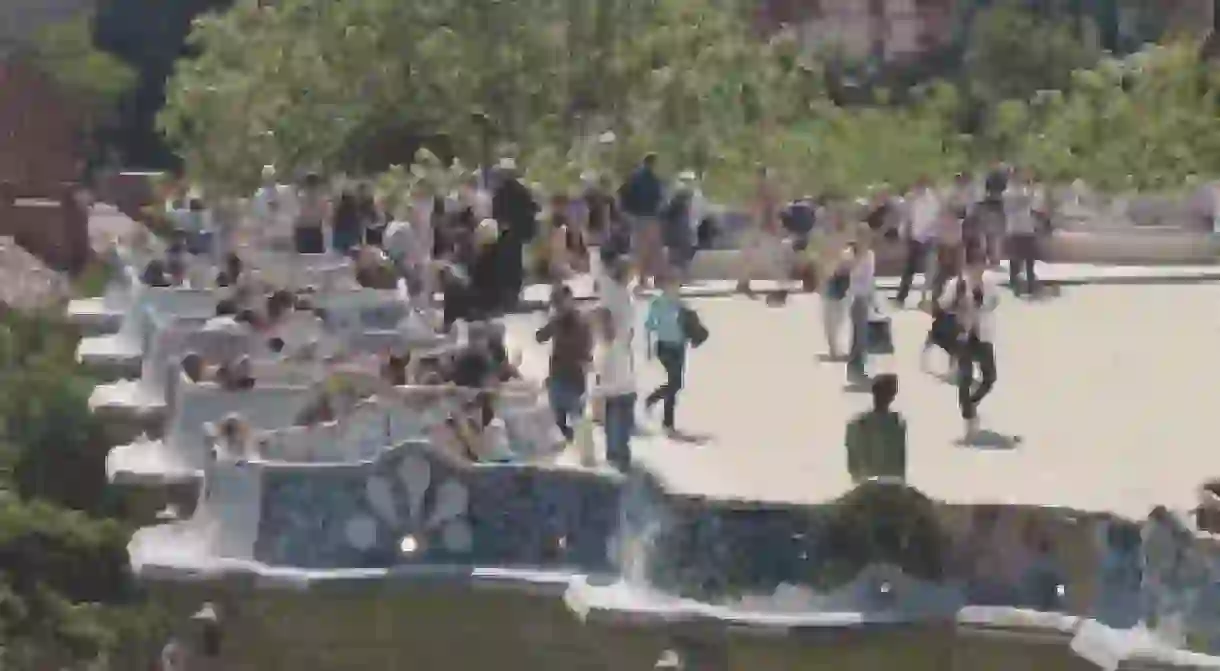5 Fabulous Fairytale Buildings By Antoni Gaudí

Antoni Gaudí drew an enormous amount of inspiration from nature to create his wonderfully fantastical architecture, so much so that his style is frequently described as organic. Gaudí, born in 1852, was from Catalonia and proud of the distinct language and culture that sets it apart from the rest of Spain. His architecture is highly acclaimed all around the world and has been influential for future generations. Here are some of his most spellbinding buildings.

Bodegas Guell
A commission from early in Gaudi’s career, this winery in Sitges, near Barcelona, is comprised of fascinating shapes and gorgeous lines. It serves as an introduction to Gaudi’s non-traditional take on past architectural trends: he studied Gothic and Oriental architecture, among others, and strove to perfect them. Gaudi is the utmost example of Catalan modernism, but his creations cannot be accurately constrained to one style – he expands beyond such limitations and stretches boundaries to the point of breaking, even by today’s standards. Bodegas Guell is evidence that he managed to do so and successfully create intensely beautiful buildings at the same time.

Casa Vicens
Gaudi’s immense capability for diverse design is immediately apparent when considering this second example of his work. The unique asymmetrical features of this family residence render it alluring in a whole different way than his winery. Surprisingly, Gaudi did not draw sketches of his buildings unless it was required of him. Instead, he would create smaller 3D models of his plans so that he could mold them into shape. Sometimes, he even improvised at the work site, but whatever his methods, it is obvious they enabled him to beautify the world.

Park Guell
This reptile figure is a well known piece by Gaudi in the public park that he designed in Barcelona. As is evident, he was not hesitant to utilize color and was an extremely artistic architect – not only that, but he was an early recycler, covering this creature in ceramics and often using already broken materials to achieve similar effects. His ability to mastermind massive projects while still attending so minutely to the smallest details is truly impressive and perhaps one of the many reasons he has risen to well-deserved fame. These details lend charm to what otherwise might be overwhelming project because viewers can focus in and find the quirky additions.
Park Guell, Carrer d’Olot, s/n, Barcelona, Spain, +34 902 20 03 02

Casa Batlló
While a widely recognized Gaudi facade, this is actually a remodeling of an already existing home. Located in Barcelona, along with most of his architectonical work, this interesting mottled building proudly displays an entirely new version of the otherwise common balconies. It catches the eye and makes people keep looking, from the dragon scaled roof with its curving ribbed tower all the way to the base, where people cannot help but enter. Inside Casa Batlló, they might find more Gaudi genius, as he had a holistic approach to architecture and sometimes engaged in interior design and landscaping.
Casa Batlló, Passeig de Gràcia, 43, Barcelona, Spain, +34 932 16 03 06

Sagrada Família
The crowning masterpiece, Gaudi is most famous for the still incomplete Basilica of Sagrada Família, which is a very popular destination for tourists. Although he began work on it in 1882, he took up the project again at the end of his life and dedicated years to it – his work is a testament to his strong Catholic faith. In the decade following 1910, he suffered numerous personal tragedies, which had the effect of focusing his attention firmly on his work for God, the Basilica. However, at the time of his death in 1926, caused by collision with a tram while walking, less than a quarter of the Sagrada Família was built.
Sagrada Família, Carrer de Mallorca, 401, Barcelona, Spain, +34 935 13 20 60













